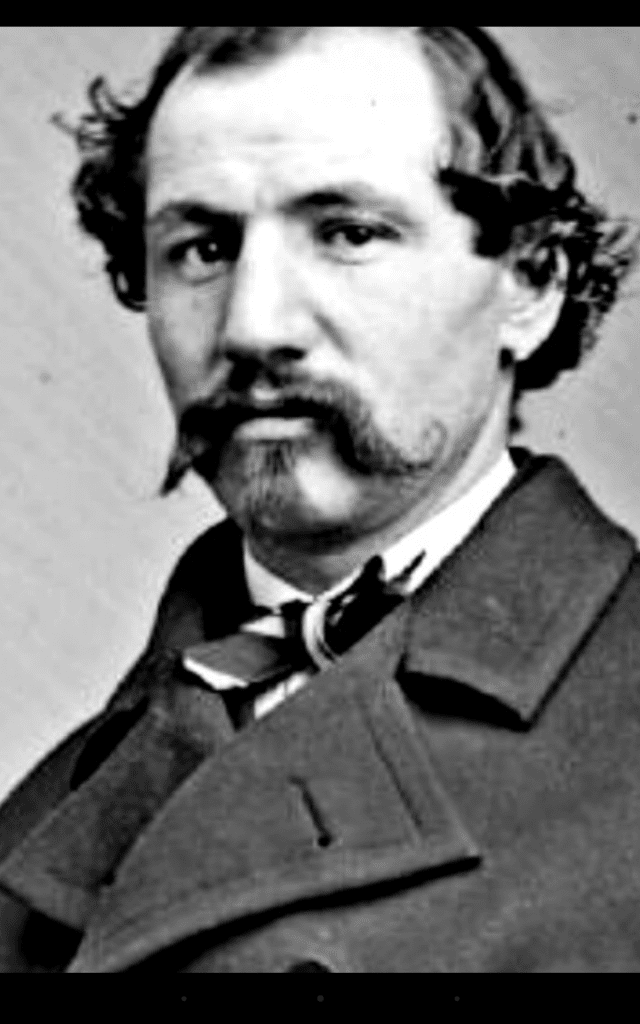By Jamie Casey
It’s a little-known fact that the parish of Tynan and Middletown produced one of the world’s most fearsome, felonious fighters of the bare-knuckle boxing scene in the 19th Century, and this month marks the 150th anniversary of his return to his native Armagh.
His name was Joe Coburn, born on July 29, 1835, in a farmhouse in the Bondville area (also known as Tullybrick Etra) of Middletown. His father, Michael, was a respected local tradesman, known for his expertise as a stonemason, but he emigrated to New York with his family during the famine when Joe was an adolescent.
Coburn inherited his father’s skills as a master of manual trade and grew up to become a bricklayer in The Five Boroughs, before eventually acquiring and running his own tavern by the name of ‘The White House’ on Grand Street, lower Manhattan.
But all the while, the Middletown man was making good money on the side as a renowned prizefighter, debuting as a 21-year-old against famed New York lawyer Ned Price, who would never fight again after trading blows with Coburn for, remarkably, over 100 rounds.
Coburn’s reputation as a fighter swelled so rapidly that, within 18 months of his first competitive fight, he was invited to take part in a public sparring exhibition with none other than John “The Benecia Boy” Heenan, who was widely regarded as America’s finest heavyweight at the time.
Indeed, Heenan must have been taken aback by the force of Coburn, who possessed “a blow like a pistol shot” according to the Brooklyn Daily Eagle, for when the Irishman fought his way into contention for the Heavyweight Championship of America, “The Benecia Boy” baulked.
It was 1862 by this stage, some five years after their initial sparring match, and Coburn had earned the right to challenge Heenan for the title he’d since won, but the born-and-bred American opted for retirement instead, handing the belt to his would-be opponent in the process.
Thus, Coburn became Heavyweight Champion of America without having to throw a punch, but his rise up the pugilistic ladder had already earned him the nickname “The Adopted Son of America”, and he duly defended his title for at least three years, with some sources suggesting four.
And it was during his years as Heavyweight Champion of America when Coburn returned to Armagh. His homecoming in July 1864 coincided with his preparation for what would be billed as “The Great International Prize Fight”.
Coburn was to take on England’s champion Jem Mace in the south of Ireland on October 4, 1864, but he arrived in London by boat from New York some four months before the date, in order to finalise negotiations and train for a fight which had attracted attention in abundance on both sides of the Atlantic.
The New York Clipper, Sporting Life, the Freeman’s Journal and Bell’s Life, a Sunday sports supplement whose contributors included Charles Dickens, all covered the build-up to the fight extensively, with much of the negotiations conducted through the press.
After finally meeting with Mace in London, Coburn set sail for Ireland to set up his training camp in Ballingoola, Limerick, where locals would wish him well during his frequent runs across the county border into Charleville, Cork.
It wasn’t all fitness and conditioning though, as Coburn took the time out to travel up north to visit parts of the country he could scarcely remember. Upon arriving back in Armagh, he was put up as a high priority guest at the Charlemont Arms Hotel, which still trades proudly to this day.
The hotel staff got more than they bargained for though, as the foyer was soon stormed by a “large number of citizens” eager to greet their hometown hero and, according to the Belfast Newsletter, Coburn embraced the reception, taking the time to converse with locals who claimed to know his father.
A short stay with relatives in Middletown soon followed, before Coburn, whose mother Mary’s maiden name was Trainor, stopped by Dundalk en route back to London for further negotiations over the finer details of his upcoming meeting with Mace.
As it were, the fight ended up being a farce, with Mace failing to show on the day, while attempts to reschedule were pegged back by the pair’s inability to agree on a referee. It proved to be “The Great International Prize Fight” that never was.
Having sold his New York tavern to cover travel costs for himself, trainer James Cusack and an acquaintance by the name of James Mack under the promise of much greater financial incentives, Coburn was understandably furious.
While in England, he gave lectures in the art of self-defence in Liverpool to help cover the expenses of his 3,500-mile trip, but an out-of-pocket Coburn left Cork by an Inman steamship on October 20, 1864, never to return to his native Ireland.
Mace and Coburn did eventually fight competitively in Bay Saint Louis, Mississippi, seven years after their non-event in Ireland, but still a winner could not be determined as a draw was called due to an injury to Mace after just five rounds. But by then the Irishman’s reputation had taken a bigger hit than even he could produce.
Prize fights were often intervened as boxing was illegal until 1901, so Coburn was no stranger to the law, and upon his return to America without a livelihood other than his fists, his run-ins with the NYPD reached barbaric proportions.
Unfortunately, and as is so often the case with boxers even today, a life of crime ensued for Coburn, and he served six and a half years of a 10-year sentence in Auburn Prison for the attempted murder of a policeman in 1877.
It was to be by far the biggest sentence of many short stints in jail, but his criminal misgivings failed to jeopardise his place among the sport’s greats, as Coburn was inducted into the International Boxing Hall of Fame under the “pioneer” category in 2013.
An alcoholic in his final days, Coburn is thought to have died of pneumonia on December 6,1890, aged 55. He is buried in Calvary Cemetery, Queens, New York.
Words by Jamie Casey, a professional sports writer and broadcaster from Armagh. Follow all his work on Twitter: @SkyJamieCasey





